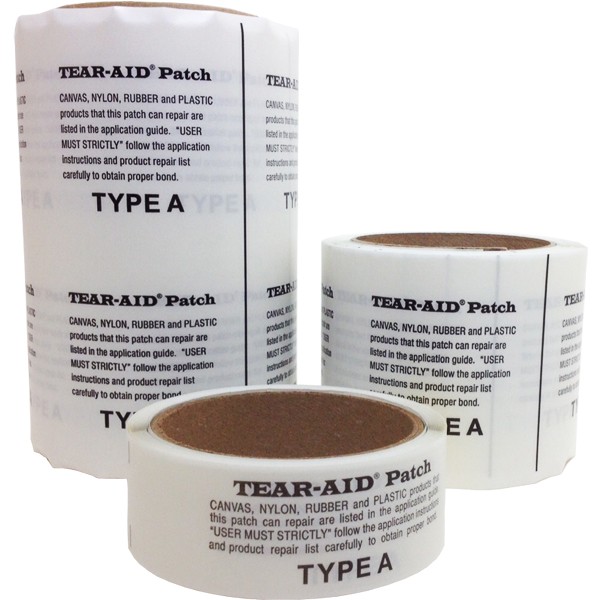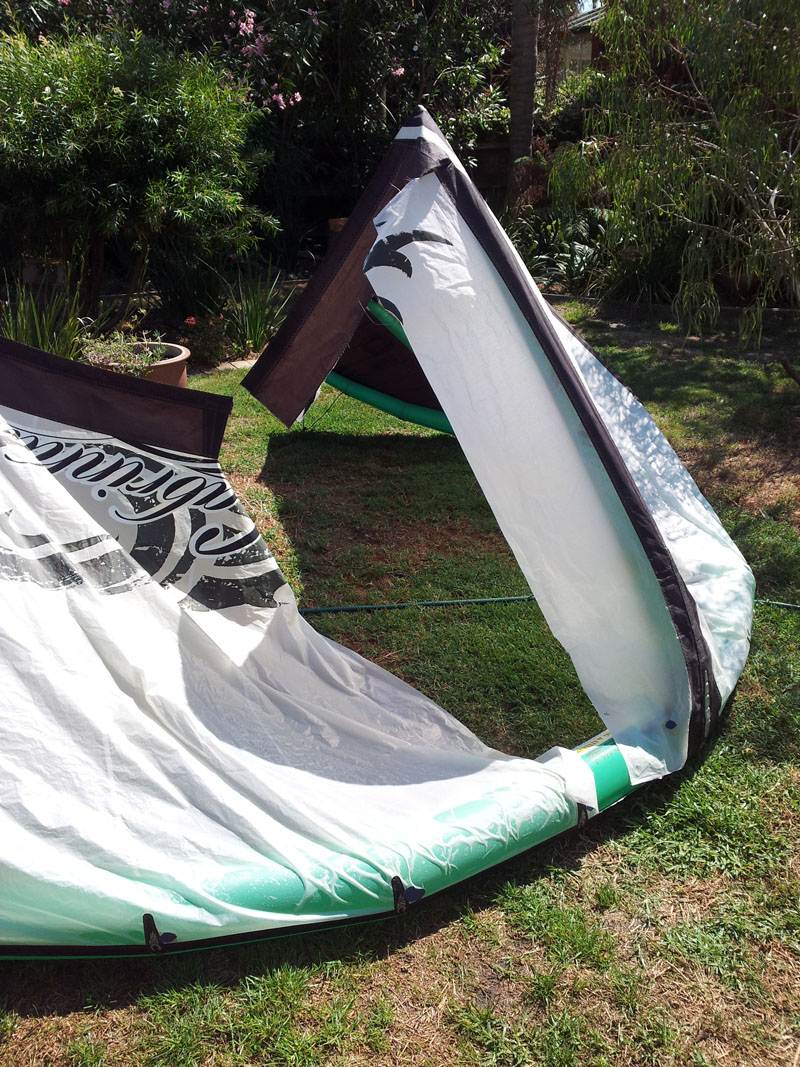Holes in the canvas
 Small holes in the canopy can appear due to wear from sand, stones, sharp objects and suchlike. Make it a habit to inspect your kite now and then. A tip to detect tiny holes is to hold the canopy against the sun. The sunrays will shine through the tiniest hole. Small holes are easy to fix by using tear-aid, small transparent patches. Carefully clean a small area around the hole whereupon you attach a small patch on either side of the hole. Don’t wait with repairing small holes, since they quickly can grow bigger of stress from wind and water.
Small holes in the canopy can appear due to wear from sand, stones, sharp objects and suchlike. Make it a habit to inspect your kite now and then. A tip to detect tiny holes is to hold the canopy against the sun. The sunrays will shine through the tiniest hole. Small holes are easy to fix by using tear-aid, small transparent patches. Carefully clean a small area around the hole whereupon you attach a small patch on either side of the hole. Don’t wait with repairing small holes, since they quickly can grow bigger of stress from wind and water.
During transporting or while kitesurfing, then your kite will be in touch with various surfaces, objects and elements. Nails, stones, sand, water, etcetera can easily damage your kite. With time it’s not unusual that small tears appear in the canopy. Fortunately the material in modern kites are manufactured in such way that small tears don’t suddenly become huge just like that and tears of a few centimeters are easy to fix yourself.


 Small holes in the canopy can appear due to wear from sand, stones, sharp objects and suchlike. Make it a habit to inspect your kite now and then. A tip to detect tiny holes is to hold the canopy against the sun. The sunrays will shine through the tiniest hole. Small holes are easy to fix by using tear-aid, small transparent patches. Carefully clean a small area around the hole whereupon you attach a small patch on either side of the hole. Don’t wait with repairing small holes, since they quickly can grow bigger of stress from wind and water.
Small holes in the canopy can appear due to wear from sand, stones, sharp objects and suchlike. Make it a habit to inspect your kite now and then. A tip to detect tiny holes is to hold the canopy against the sun. The sunrays will shine through the tiniest hole. Small holes are easy to fix by using tear-aid, small transparent patches. Carefully clean a small area around the hole whereupon you attach a small patch on either side of the hole. Don’t wait with repairing small holes, since they quickly can grow bigger of stress from wind and water. If your kite has gotten a tear that is longer than a decimeter, then consider to give your kite to a sailmaker that can make a professional repair that last.
If your kite has gotten a tear that is longer than a decimeter, then consider to give your kite to a sailmaker that can make a professional repair that last. 
